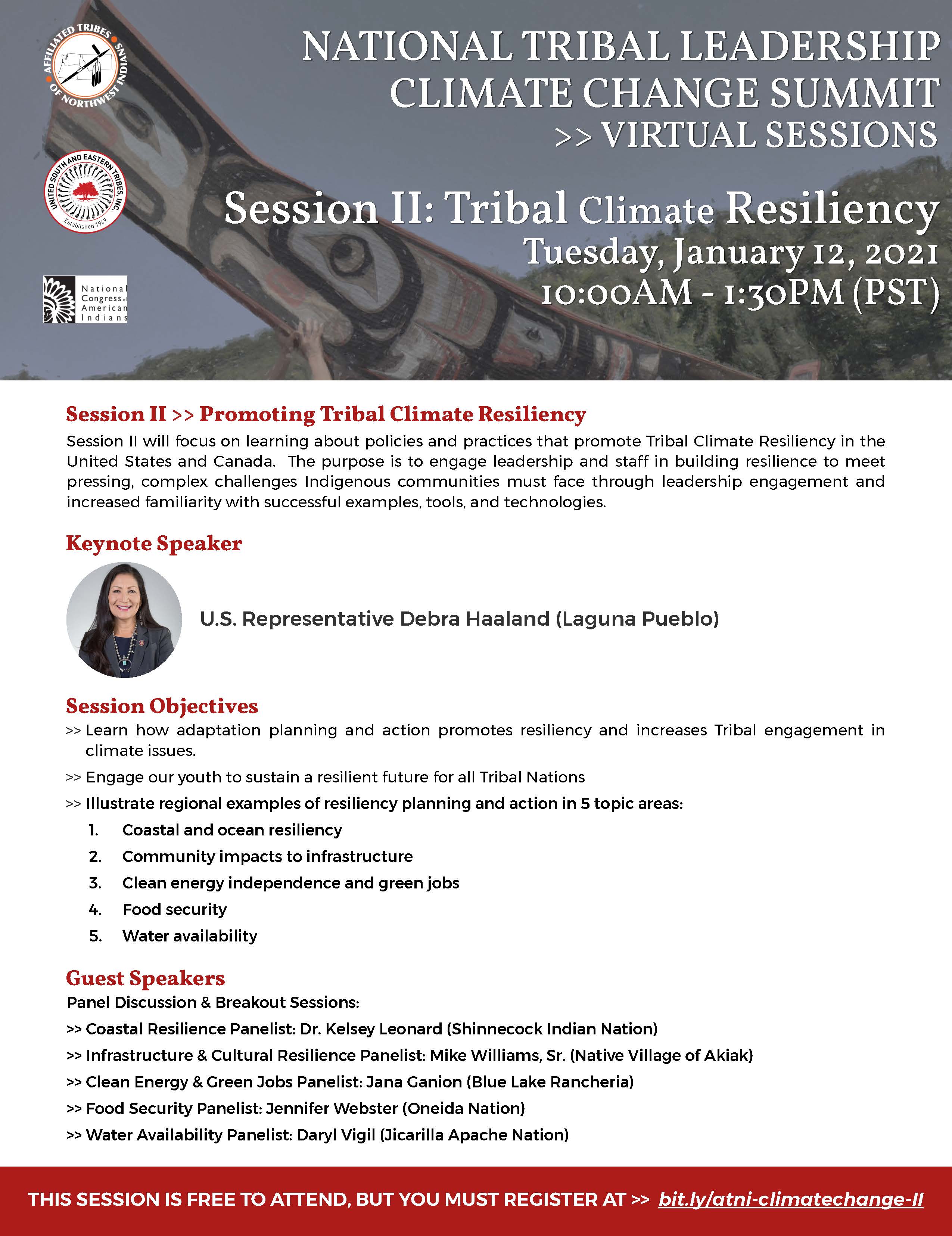James Rattling Leaf, Robin O’Malley & Chad McNutt receive Rising Voices project funding award
U.S. Representative Debra Haaland (Laguna Pueblo) added as keynote speaker to ATNI's National Tribal Leadership Climate Change Summit Session II: Tribal Climate Resiliency
Please join us for the next NC CASC webinar, "Revised Thinking on Adaptation: Will We be Less Successful than Assumed?"
When
Phil Higuera Gives Wildfire Talk at National Academies of Science Board in Agriculture and Natural Resources Public Session
Read the Latest Tribal Climate Newsletter
New Drought Portal Highlighted at AGU's 2020 Press Briefing
Abstract (from IOPScience): Ecological droughts are deficits in soil-water availability that induce threshold-like ecosystem responses, such as causing altered or degraded plant-community conditions, which can be exceedingly difficult to reverse. However, 'ecological drought' can be difficult to define, let alone to quantify, especially at spatial and temporal scales relevant to land managers. This is despite a growing need to integrate drought-related factors into management decisions as climate changes result in precipitation instability in many semi-arid ecosystems. We asked whether success in restoration seedings of the foundational species big sagebrush (Artemisia tridentata) was related to estimated water deficit, using the SoilWat2 model and data from >600 plots located in previously burned areas in the western United States. Water deficit was characterized by: 1) the standardized precipitation-evapotranspiration index (SPEI), a coarse-scale drought index, and 2) the number of days with wet and warm conditions in the near-surface soil, where seeds and seedlings germinate and emerge (i.e. days with 0-5 cm deep soil water potential > -2.5 MPa and temperature above 0 °C). SPEI, a widely used drought index, was not predictive of whether sagebrush had reestablished. In contrast, wet-warm days elicited a critical drought threshold response, with successfully reestablished sites having experienced 7 more wet-warm days than unsuccessful sites during the first March following summer wildfire and restoration. Thus, seemingly small-scale and short-term changes in water availability and temperature can contribute to major ecosystem shifts, as many of these sites remained shrubless two decades later. These findings help clarify the definition of ecological drought for a foundational species and its imperiled semi-arid ecosystem. Drought is well known to affect the occurrence of wildfires, but drought in the year(s) after fire can determine whether fire causes long-lasting, negative impacts on ecosystems.
These data are 30m by 30 m grids of the mean Standardized Precipitation-Evapotranspiration Index (SPEI) between 2001-2014 in the western United States. The SPEI index was developed by Sergio M. Vicente-Serrano and coauthors (https://spei.csic.es/index.html). Source evapotranspiration and precipitation data were generated by gridMET (http://www.climatologylab.org/gridmet.html).
Contact Us
Want to see more? Do you have feedback? Was this site helpful? Send us an email!


